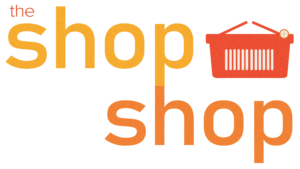The disparity between those who can effectively process and apply knowledge and those who cannot is widening. This phenomenon is at the heart of the Knowledge Gap Theory. Originally proposed by Philip J. Tichenor, George A. Donohue, and Clarice N. Olien in the 1970s, the theory suggests that information is not equally accessible to all, often creating a divide based on socioeconomic status, education, and other factors. As an SEO content writer, understanding and leveraging this theory can significantly enhance your ability to optimize websites and connect with diverse audiences.
Knowledge Gap Theory tries to address a severe inequality between those who can process and apply knowledge, and those who can’t. This divide is ongoing — and growing. It’s a key factor for anyone who aims to dispense new, useful information to the mass market. New ideas can’t take hold in people who are not currently equipped to process knowledge.
Understanding Knowledge Gap Theory
Knowledge Gap Theory posits that as information influx increases, those with higher socioeconomic status tend to acquire information at a faster rate compared to those with lower status. This results in a widening gap between the “information-rich” and the “information-poor.” The theory highlights the importance of accessibility in information dissemination and the need for mindful communication strategies that cater to different audience segments.
Knowledge Gap Theory and The Knowledge Divide
In America, there is a deep division between those who can find, assess and share knowledge and those who struggle with the process. Researchers refer to this as The Knowledge Divide.
Essentially, some people can understand new information. Some people can’t. Some people can evaluate the validity of new information. Others struggle to separate truth from false information. Some people can use new insights to their own benefit. Other people find themselves left behind.
In the digital age, this has increased. Those with access to the internet, and the ability to sort valid sources from false information, have a better chance of accumulating knowledge than those who lack these resources.
A key point in this is The Knowledge Gap. As a theory, The Knowledge Gap proposes an inequity in understanding. It’s not just that some people are simply uneducated. It’s that some people are unequipped to process knowledge and apply it to their lives. Since we live in a knowledge society, this creates a massive, ongoing inequality — that appears to divide along socioeconomic lines.
Rallying the Masses
Knowledge Gap Theory, proposed by a team of researchers in 1970, not only explains why it’s difficult to motivate the masses but also, presents several communication solutions. The researchers were Phillip J. Tichenor, then Associate Professor of Journalism and Mass Communication, George A. Donohue, Professor of Sociology, and Clarice N. Olien, Instructor in Sociology.
They posited, “… as the infusion of mass media information into a social system increases, higher socioeconomic status segments tend to acquire this information faster than lower socioeconomic status population segments. Hence the gap in knowledge between the two tends to increase rather than decrease.”
Essentially, access to mass media messages increases among those with more financial means. Conversely, the part of the population with a lower economic status continues to get less access to information. At the time, these researchers saw how technology became a gatekeeper for knowledge and the related expense blocked the poorest populations from accessing vital information. This theory treats knowledge as a commodity. Also, it points out that wealthier people have more access to knowledge.
Key Propositions
- In a society, people have a large psychological diversity. This comes from life experience, psychological makeup, relationships, and social category memberships.
- In spite of these differences, more educated people have more tools to access knowledge. This includes better reasoning and communication skills, wider social circles, and more background knowledge.
- Additionally, educated people interest themselves in a broad range of topics including serious ones like health, public affairs, and science.
- Therefore, mass media gives people of a higher social status a chance to access knowledge faster than people of a lower social status.
The theory predicts that the gap will continue to widen over generations.
How the Knowledge Gap Starts
There are several factors that contribute to The Knowledge Gap.
- Communication Skills – People with more education increase their communication skills. So, asking for information and understanding it is an easier process. If someone has less education, their communication skills are lower. So, they are less likely to be able to ask for information and less able to interpret the information.
- Information Repositories – Even during the internet age, information and ideas require time and funds to access. People have to sort through clutter and misinformation to find knowledge. More educated people have spent time with classrooms, textbooks, and thoughtful discussions.
- Relevant Social Contact – Education facilitates social integration. Educated people explore various perspectives because they are exposed to a world beyond their own experience.
- Selective Exposure – A person with an education can tell the difference between a good source and a bad source. They waste less time trying to parse misinformation.
- Media Target Markets – Media messages typically target the wealthier class with thoughtful information, over the lower class, because they have the most means to act.
Over time, the effects have become even more severe. It compounds with each generation.
How to Reduce the Gap
After the initial theory, Donohue, Tichenor, and Olien decided to refine their theory by giving some solutions. Their study reviewed survey data on national and local issues from probability samples of 16 Minnesota communities gathered between 1969 and 1975.
- Local Issues – The knowledge gap closed when people of any class understood how a situation would affect them personally.
- Social Conflict – Controversy draws attention to issues and thus, reaches more people.
- Homogeneity in a Community- Communities where people are similar demographically tend to have a similar distribution of knowledge throughout.
This left the researchers with a strategy to incubate information within a community.
Knowledge Gaps After the Internet
Does the internet make this argument irrelevant? Elizabeth Corley and Dietram Scheufele explored this question in 2010. They used nanotechnology as their example. They reviewed survey results asking respondents about their knowledge of nanotechnology between the years 2004 to 2007. Those with at least a college degree increased in their knowledge over those years. Those with less than a high school diploma decreased in their knowledge over that same time frame.
With regard to researching online, the research team found that some people with less education could educate themselves — a lot of online information is written in layman’s terms. But, that still puts the initiative on the individual to overcome social obstacles and close the knowledge gap.
Closing the Gap
Criticism for the theory focuses on people’s media consumption behaviors.
In general, researchers have found that people with a higher level of education can increase their knowledge over time — even independently of a formal education course. However, the amount of media attention an issue receives can dictate whether that information search actually begins.
Essentially, the “knowledge search” fire can’t happen without an “information” spark. Media gatekeepers, government policy decisions, and public education initiatives influence these moments. Anyone who is looking to communicate a new concept must understand the current state of their audience. If people aren’t equipped to process knowledge, new ideas can’t take hold. That remains an important factor to consider in the planning process for any communication campaign.
Applying Knowledge Gap Theory to SEO Content Writing
As an SEO content writer, your goal is not just to create engaging content but also to ensure that it reaches and resonates with a broad audience. Here’s how the Knowledge Gap Theory can inform and improve your approach:
1. Audience Analysis and Segmentation
Understanding your audience is crucial. The Knowledge Gap Theory encourages you to identify the different knowledge levels among your audience segments. By grouping your audience based on their knowledge, you can tailor content to bridge these gaps effectively. Use tools like Google Analytics to gather data on user demographics and behavior to guide your content strategy.
2. Creating Inclusive Content
Crafting content that is accessible and understandable for all knowledge levels is key. Consider using simple language, clear explanations, and relatable examples to make complex topics more digestible. This approach helps in reducing the knowledge gap and ensures that your content is inclusive and engaging for a wider audience.
3. Educational Content Strategy
One effective way to bridge the knowledge gap is by providing educational content that empowers your audience. Create content that not only informs but also educates users on relevant topics. This could include how-to guides, tutorials, and explainer videos that cater to differing knowledge levels, ultimately enhancing user experience and improving SEO performance.
4. Utilizing Multimedia and Interactive Elements
Different people learn differently. Some prefer text, others visuals, and some interactive content. Incorporate a mix of multimedia elements such as infographics, videos, and interactive quizzes to cater to varied learning preferences. This diversification can help bridge the knowledge gap by ensuring that information is accessible in multiple formats.
5. Monitoring and Feedback
Finally, continuously monitor your content’s performance and seek feedback. Use metrics to evaluate how well your content is bridging the knowledge gap and make adjustments as needed. Encourage feedback from your audience to understand their needs and preferences better.
The Takeaway
By integrating the principles of Knowledge Gap Theory into your SEO content writing, you can create more effective and inclusive content. This approach not only helps optimize websites but also ensures that information is accessible to a broader audience, ultimately narrowing the knowledge gap. As a content writer, embracing this theory will enable you to connect with your audience on a deeper level, fostering trust and engagement that transcends traditional barriers.

Understand Shopping Trends
We’re dropping our next newsletter in July 2025. Sign up for exclusive freebies, giveaways, and industry insights.


